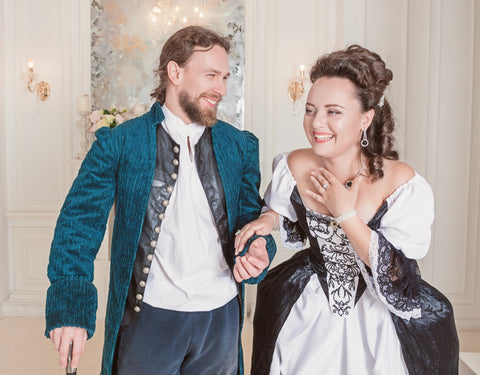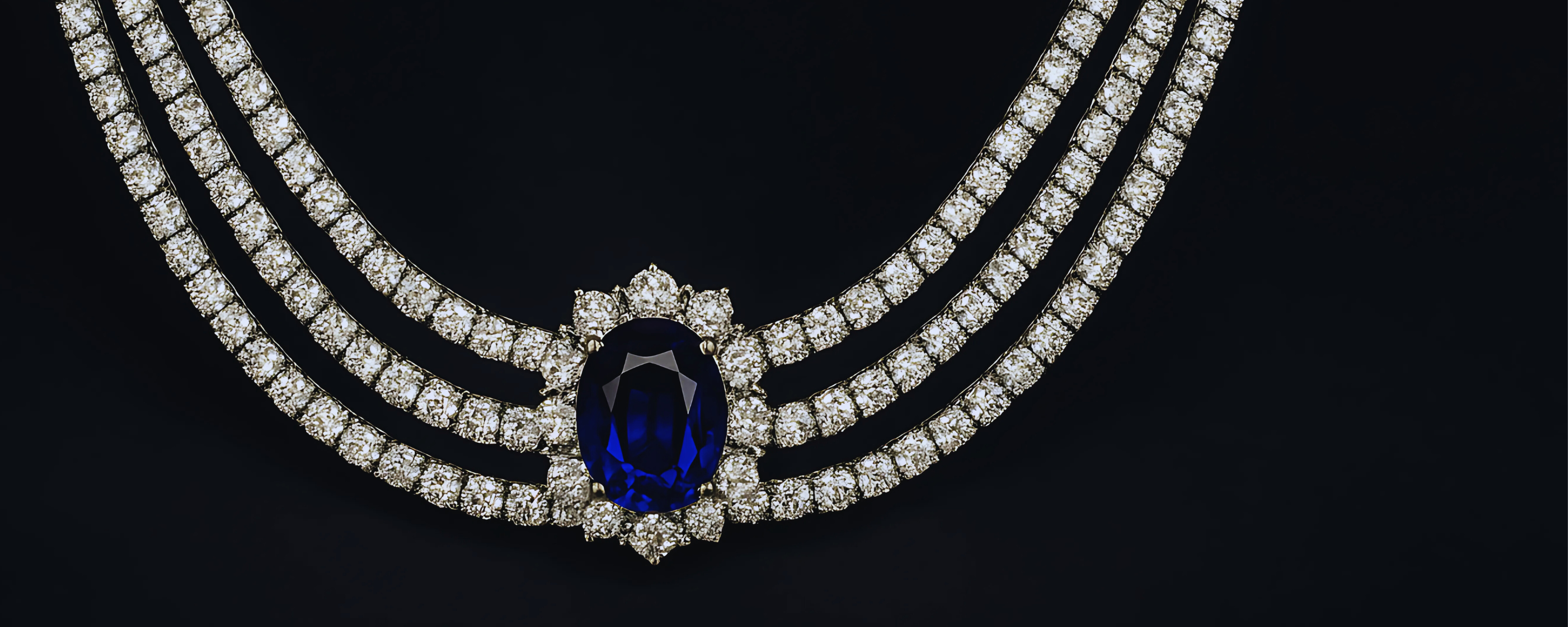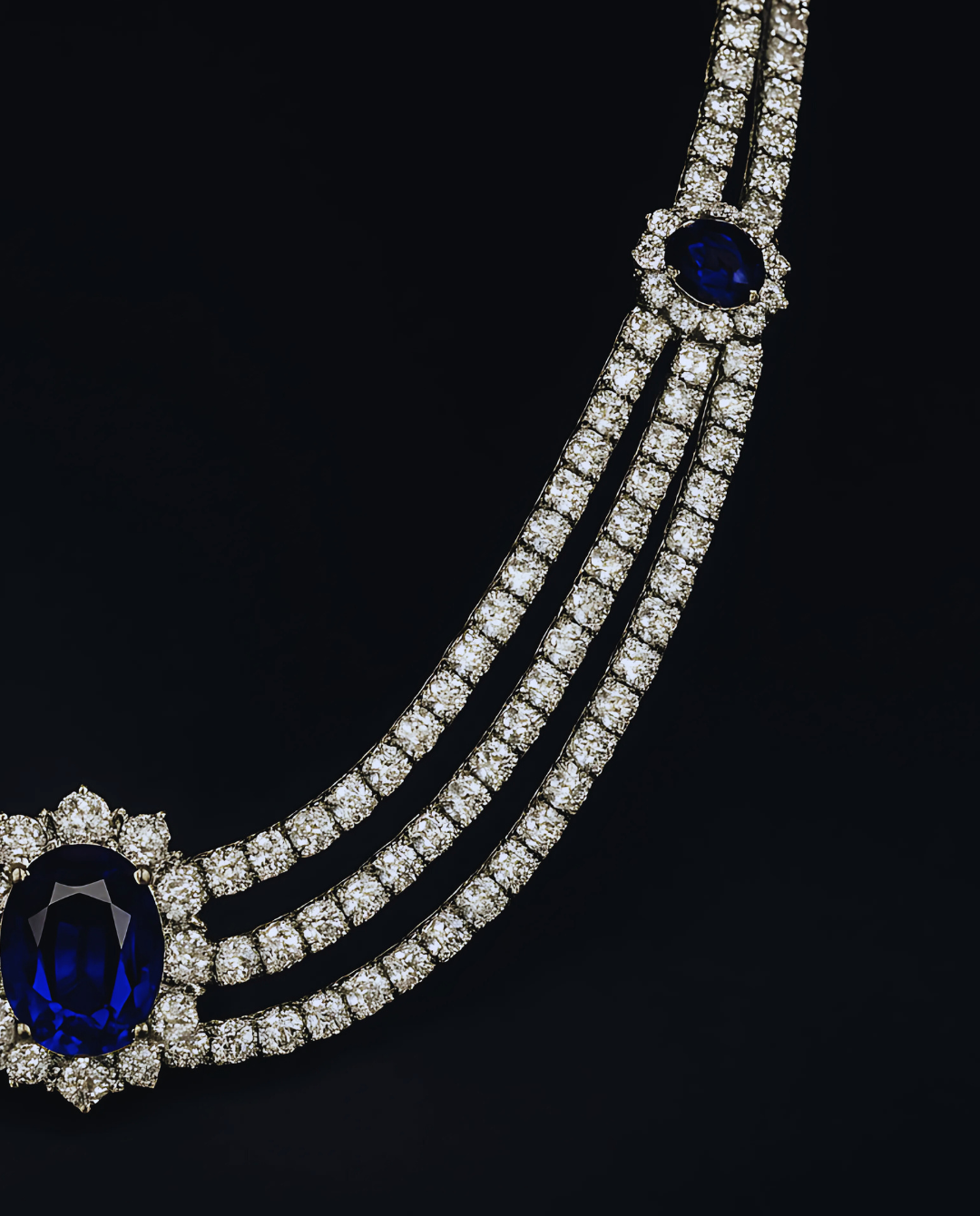Spring is upon us!
In with the new, warmer weather and out with the cold drudgery of winter. And with this new season upon us, Lark & Berry is proud to introduce our new OMNIS collection. It represents what's NEXT in fashion - pieces that can be worn by anyone!


But how did we get here in 2021, a time when unisex jewellery, fashion and general gender-bending experimentation with attire is so commonplace and cool?
Well, interestingly enough, it's been a long road through history!
The farther back we look, of course, it's totally expected to see "unisex" type fashion in the "dandy" ways of dressing by both men and women, in most any particularly old and/or ancient era. It's all forever immortalized in paintings, cave drawings, art and eventually, photography.
Are you picturing the illustrious fashions of eras like ancient Egypt, Victorian times - even all the way through the Age of Enlightenment in the 1800's? Then yep, you're right on the money!



In the 1500's, King Henry VIII was known first for having 6 wives, but then second place was the amount of jewellery he sported...

It wasn't until perhaps the 20th century (the 1900s) that expectations of what was a man and woman and what they "should wear" to represent it became sort of rigid and more "conservative."
But then, a progressive change came within the same century, as reported in an interesting history of unisex fashion by The Atlantic from 2015:
"...unisex clothing [came along as] a baby-boomer corrective to the rigid gender stereotyping of the 1950s, itself a reaction to the perplexing new roles imposed on men and women alike by World War II. The term “gender” began to be used to describe the social and cultural aspects of biological sex in the 1950s—a tacit acknowledgement that one’s sex and one’s gender might not match up neatly. The unisex clothing of the 1960s and 70s aspired “to blur or cross gender lines...”

Unfortunately, the Atlantic article goes on to report that these open trends of the 60s and 70s resulted in "a stylistic whiplash” of more obviously gendered clothing for women and children beginning [again] in the 1980s."
BUT, not to fear, because during that decade, there were people like Prince and Madonna around to buck those shut down, conservative trends...


Then the 90's came along, which much like the 60's, were a period that very much rebuked the conservative era that immediately preceded it. Doing whatever you felt fashion-wise became mainstream again!
The 90's re-opened the floodgates for experimentation to thrive and continue through to the present. Interestingly, The Atlantic reported in the same article (again, from 2015) that in March of that same year, Selfridges in London held a unisex event that many on-hand may not have realized would be a sign of the near future:
"...[In 2015, Selfridges] gave itself a radical makeover, transforming three floors of its Oxford Street emporium into gender-neutral shopping areas...Androgynous mannequins wore unisex garments by designers such as Haider Ackermann, Ann Demeulemeester, and Gareth Pugh, and the store’s website got a similarly sexless redesign, displaying the same products on both male and female models. Dubbed “Agender,” the temporary pop-up shopping experience—or experiment—ultimately proved to be more successful as a marketing tool than a retail revolution; as some fashion journalists have pointed out, today’s clothes “are much the same for each sex anyhow.”
Pretty cool that happened just steps away from where Lark & Berry would open up shop a mere 2 years later, introducing the world to the first brand anywhere to exclusively offer cultured diamonds and stones in its fine designer jewellery!
But as that Selfridges remembrance illustrates, 2015, recent as it was, was still a bit early for unisex fashions to really stick - early as in compared to now, where we are seeing notable pop culture influencers like Harry Styles (pictured above) and Billie Eilish take fashion in every mish-mashed direction they can think of.

It seems now, in 2021, there's no one "rule" anymore; anything goes as long it looks aesthetically cool.
But there is a distinct move towards unisex to observe in fashion. Men, for instance, (who identify strictly as such) are wearing more accessories in general and even sporting luxury jewellery. Just look at Harry Styles with his notable pearls.
And that brings us back to our new OMNIS collection!
OMNIS is modern-meets-vintage with a touch of anything goes 90's era re-invention. The bold lines and cutting contrasts of our new unisex set were inspired by Art Deco architecture and artwork, yielding an 18k gold collection stylishly straddling the line between past and future. Choose from the glorious green and blue accents of effervescent emeralds and sapphires or keep it classic with fine diamonds!
Check out these pieces/concepts, and click or tap any below to shop the collection!
Experimentation in fashion and a general lack of being beholden to gender stereotypes seems here to say, and personally, we at Lark & Berry love it that way! Dress or accessorise in any way that makes you feel like YOU. Get out there and just be yourself!







